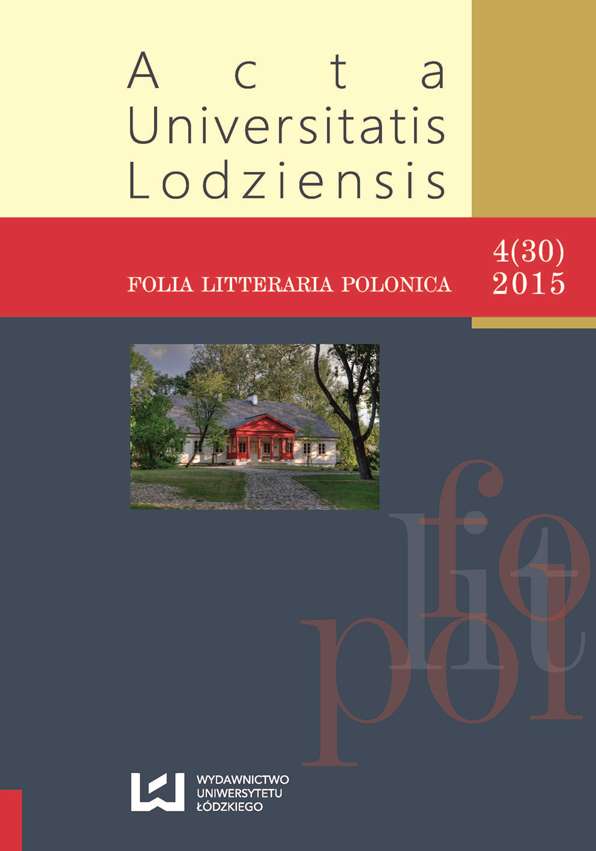„Nabożne westchnienia” Mikołaja Mieleszki wobec piśmiennictwa ascetyczno-mistycznego
Mikołaj Mieleszko’s “Pious Sighs” towards ascetic-mystical literature
Author(s): Katarzyna Kaczor-ScheitlerSubject(s): Language and Literature Studies, Studies of Literature, Polish Literature
Published by: Wydawnictwo Uniwersytetu Łódzkiego
Keywords: emblem; Mikołaj Mieleszko; ascetic-mystical literature; Kasper Drużbicki; St. Teresa of Ávila; St. Ignatius of Loyola; applicatio sensuum
Summary/Abstract: The article points to a relationship between Mikołaj Mieleszko’s "Pious Sighs" ("Nabożne westchnienia"; 1657) and the ascetic-mystical literature of the 17th century. This work particularly shows the meditative character of Mieleszko’s emblems. It also presents the division of the work into three books introduced by Mieleszko, which can be viewed in the context of the model of the three-stage mystical way to God (via purgativa, via illuminativa, via unitiva), employed by St. Ignatius of Loyola but known already by Pseudo-Dionysius the Areopagite and fully expressed by St. Bonaventure. The article also discusses the participation of human faculties in the emblems: memory, intellect, will, imagination, and feelings, which are so important in the act of meditation. Referring to the method of applying senses (applicatio sensuum), originating from the Church tradition (Origen, St. Bonaventure) and taken over by St. Ignatius of Loyola, the work emphasizes Mieleszko’s need to apply it in his emblems. Moreover, the article focuses on the influence of Kasper Drużbicki’s and St. Teresa of Ávila’s works visible in Mieleszko’s poems. The themes, allegories, symbols and metaphors of the ascetic-mystical literature reverberate in the emblems of the Baroque poet.
Journal: Acta Universitatis Lodziensis. Folia Litteraria Polonica
- Issue Year: 30/2015
- Issue No: 4
- Page Range: 5-27
- Page Count: 23
- Language: Polish

